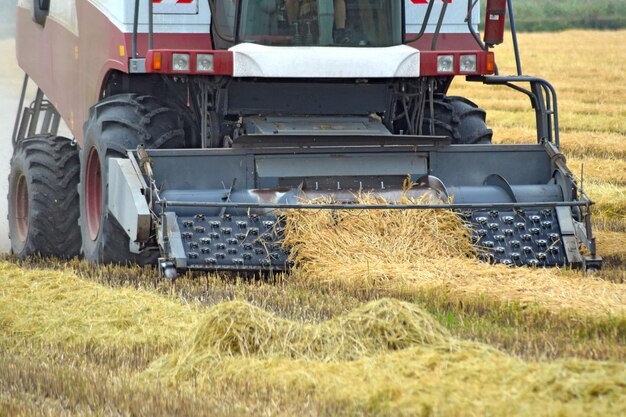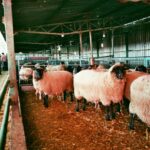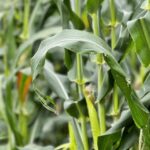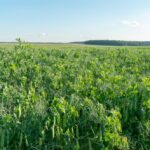Livestock farming is an essential pillar of global agriculture, providing meat, milk, and other products for human consumption. One of the key factors that determine the productivity and health of livestock is the quality and availability of forage. Forage harvesters, a vital piece of agricultural machinery, play a significant role in ensuring that livestock has access to high-quality feed, thereby enhancing the overall efficiency of farming operations.
What Are Forage Harvesters?
Forage harvesters are specialized machines used to harvest, chop, and process crops like grass, alfalfa, corn, and sorghum into silage or haylage for livestock feed. These machines come in two main types: self-propelled forage harvesters and pull-type models that are attached to tractors. Both types are equipped with cutting, chopping, and collecting mechanisms designed to handle large volumes of forage efficiently.
How Forage Harvesters Enhance Livestock Farming Efficiency
1. Improved Feed Quality
Forage harvesters ensure that crops are harvested at the optimal stage of growth, preserving their nutritional value. These machines chop forage into uniform lengths, making it easier for livestock to digest and absorb nutrients. High-quality silage produced by forage harvesters enhances livestock health, milk production, and weight gain, ultimately boosting productivity.
2. Time and Labor Savings
Manual harvesting of forage is labor-intensive and time-consuming, especially for large-scale farms. Forage harvesters significantly reduce the time and labor required for harvesting and processing feed. A single machine can handle vast areas quickly, enabling farmers to focus on other essential tasks.
3. Enhanced Silage Preservation
Proper chopping and compacting of forage are critical for silage preservation. Forage harvesters cut crops to precise lengths, which facilitates better packing and reduces air pockets in silos. This minimizes the risk of spoilage and ensures that the silage remains nutritious for an extended period.
4. Versatility Across Crops
Forage harvesters can process a variety of crops, including grasses, legumes, and cereal crops. This versatility allows farmers to diversify their feed sources and maintain a balanced diet for their livestock. Additionally, the ability to switch between crops ensures continuous feed production throughout the year.
5. Efficient Resource Utilization
Modern forage harvesters come equipped with advanced technology, such as sensors and GPS systems, which optimize cutting height, chopping length, and operational speed. These features reduce wastage and ensure efficient use of resources, including fuel, labor, and time.
6. Cost-Effectiveness
While forage harvesters represent a significant upfront investment, their long-term benefits outweigh the initial costs. By improving feed quality, reducing wastage, and enhancing operational efficiency, these machines help farmers save money on feed purchases and other associated costs.
Key Features of Modern Forage Harvesters
- Advanced Cutting Mechanisms: Sharp, durable blades ensure clean and precise cuts, minimizing crop damage.
- Chopping Systems: Adjustable chopping lengths cater to different livestock feed requirements.
- Built-In Sensors: Monitor forage moisture levels, yield, and quality in real-time.
- GPS Integration: Enables precision farming by mapping fields and optimizing harvesting routes.
- High-Performance Engines: Provide the power needed to handle tough crops and challenging terrains.
Tips for Effective Use of Forage Harvesters
- Harvest at the Right Time: Ensure crops are harvested at their peak nutritional stage for maximum feed quality.
- Regular Maintenance: Keep blades, belts, and other components in good condition to avoid breakdowns and maintain efficiency.
- Adjust Settings Appropriately: Set chopping lengths and cutting heights based on the type of crop and livestock requirements.
- Train Operators: Skilled operators can maximize the efficiency and productivity of forage harvesters.
- Store Silage Properly: Use airtight silos or bags to preserve silage quality after harvesting.
Forage harvesters have become indispensable in modern livestock farming, offering numerous benefits that enhance efficiency, productivity, and profitability. By ensuring the timely production of high-quality feed, these machines contribute to healthier livestock and improved farm operations. As technology continues to advance, forage harvesters will play an even greater role in sustainable livestock farming, helping farmers meet the demands of growing populations while maintaining environmental balance.
Join 'Farmers Mag' WhatsApp Channel
Get the latest Farming news and tips delivered straight to your WhatsApp
CLICK HERE TO JOIN






